Every time you fill your petrol tank or check the value of a gold ring, you’re touching a world of commodities that move based on specific forces. So, by the end of this guide, you will know all about what drives commodity prices of all market components, including oil and gold.
These forces, or “drivers,” tell us why oil suddenly spikes, why corn futures dip in summer, or how a shaky election can lift silver overnight.
Knowing what pushes prices up or down turns guesswork into informed trading. This article takes a plain look at those drivers so newcomers and seasoned traders alike can read the market with a sharper eye.
How Prices Really Move
Unlike company shares, which rise and fall on earnings reports or interest rate talk, commodities sit at the crossroads of the physical world. They are dug from the earth, grown in fields, or shipped across oceans, and their costs mirror that day-to-day reality.
Weather in Brazil, pipeline outages in Canada, or a central bank gold-buying spree all spill directly into supply and demand. Because of that, charts don’t just show numbers; they also echo cargo ships, harvest yields, and even political speeches.
- Supply and Demand Dynamics
Supply and demand are the big engine that drives every market, and commodities are no exception. When OPEC decides to cut production or U.S. shale wells pump flat out, the amount of crude on the world stage changes fast, pushing prices up or down almost overnight.
Gold usually climbs when traders and families want a safe place to park their cash, like during a shaky economy or political surprise.
Crops like wheat swing according to how good or bad the harvest is, and whether countries need a bigger slice of the global market, moves you can track on any commodity ticker.
- Geopolitical Events
In the commodity space, the headlines coming out of a trouble spot can matter more than any spreadsheet. Fighting in the Middle East, for example, raises worries about oil tankers getting stuck in the Strait of Hormuz, and traders respond with a quick price jump even before damage is done.
Sanctions against nation-sized copper mines, or riots near key gold shafts, can block shipments and send those metal prices sky-high. That same political noise may increase nervous buying of gold, giving it a double boost from fear and limited supply.
- Economic Indicators
Wider economic health shows up in the daily value of raw goods, too, so investors watch key numbers closely. A solid rise in the U.S. job count, for instance, can make the dollar stronger, and because most commodities are priced in greenbacks, a stronger dollar often drags the prices of oil, corn, and soy down a little.
On the flip side, when inflation readings like the Consumer Price Index (CPI) jump, folks look for a hedge, and gold usually gets the nod, pushing its value higher. And growth stories out of China, the world’s biggest metal user, amplify appetite for energy and products like aluminium every time factory output beats the forecast.
What Drives Commodity Prices – Oil, Gold & Other
📝Note:
While these forces touch nearly every raw material, each acts through its own lens, giving every commodity a personality of sorts,
- What Moves Oil Prices?
Crude oil prices mostly follow production targets, stockpile numbers, and overall world demand. Each week, the U.S. Energy Information Administration (EIA) posts inventory data, and traders react, sometimes with big price jumps.
Demand from trucks, planes, ships, and factories also puts upward or downward pressure. Finally, political events—say, a damaged pipeline or border skirmish—can quickly shake the market.
- Gold’s Value Levers
Gold’s appeal as a safety net drives its price more than anything else. When the economy wobbles, interest rates are low, or the dollar slides, buyers rush in, raising the value. Large sales or buys by central banks show up on charts and also nudge the market one way or the other.
- Drivers Behind Other Commodities
Farm products like corn and soybeans depend heavily on the weather, harvest size, and trade rules. Metal prices move with building projects and factory orders, especially in fast-growing countries such as China. Because each item has its own set of influences, separate price patterns appear in market reports.
Key Factors That Push Commodity Prices Up or Down
- Watching the Markets
Commodity prices respond quickly to headlines, so traders need to stay glued to news feeds. Some markets jump overnight, like oil, while others, like gold, drift up or down more slowly.
Most trading apps offer real–time charts and alerts, yet even the best tools can’t predict every swing. Read the signals, but expect surprises.
- The Limits of Price Drivers
No one factor tells the whole story. Hurricanes, mine strikes, or a viral tweet can change supply overnight. Mood and speculation often exaggerate or dull the effect of hard data. Outdated numbers or partial reports can mislead traders, so cast a wide net when analysing markets.
- Engaging with Commodity Markets
Knowing what moves the prices of things like crude oil, gold, or wheat helps any trader read the market mood more clearly. By tracking basics such as stock levels, political events, and broader economic news, investors can spot the clues that often explain sudden price jumps or drops across these assets.
Conclusion:
Now you know all about what drives commodity prices, along with geopolitical and economic headlines, keep commodities on a lively course in today’s markets. By studying these drivers together, traders get a roadmap of the forces at work, and that makes each login to their platform feel a little more confident.






